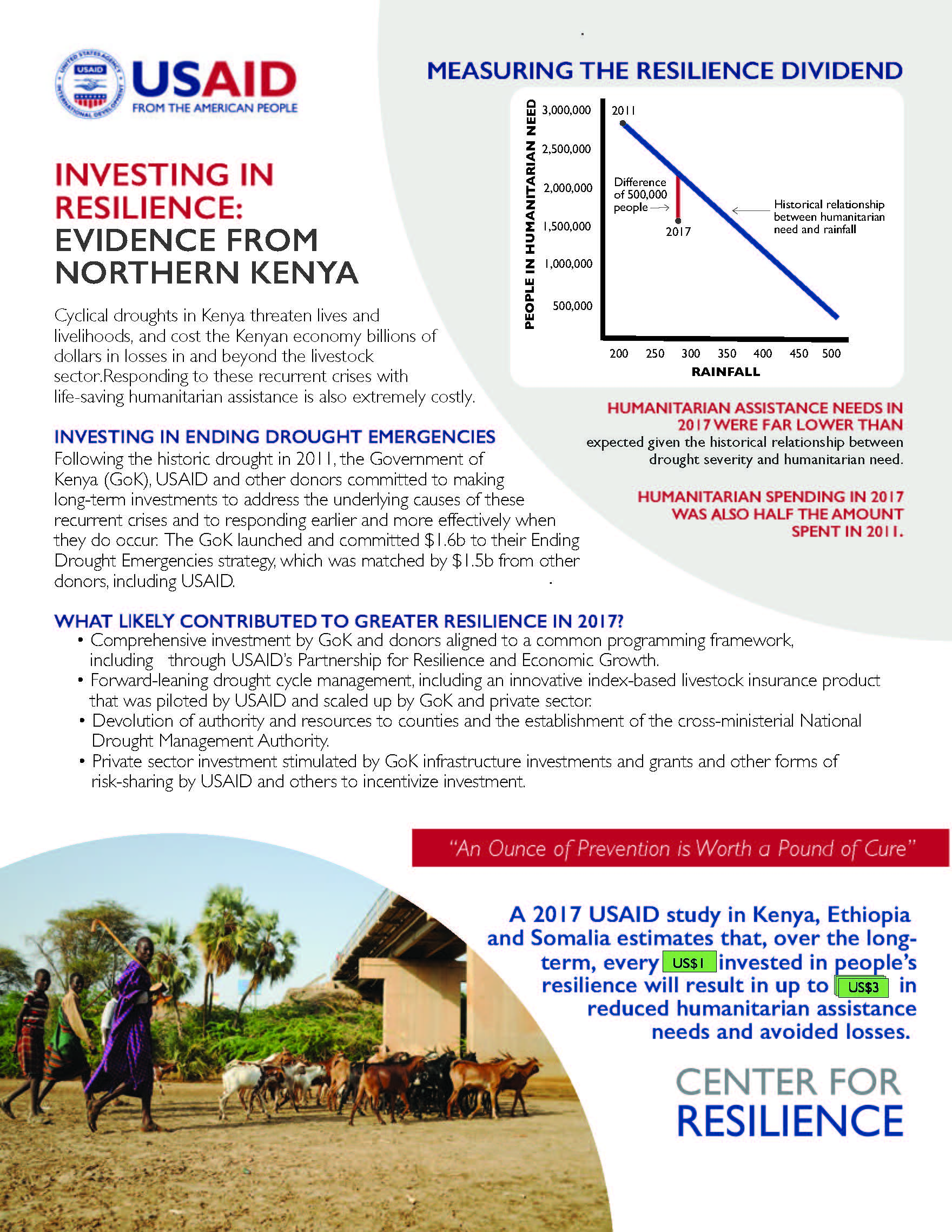- What We Do
- Agriculture and Food Security
- Democracy, Human Rights and Governance
- Economic Growth and Trade
- Education
- Environment and Global Climate Change
- Gender Equality and Women's Empowerment
- Global Health
- Humanitarian Assistance
- Transformation at USAID
- Water and Sanitation
- Working in Crises and Conflict
- U.S. Global Development Lab
Speeches Shim
Despite repeated severe droughts in 2016/17, the severity of Kenyan food insecurity was substantially less than during the 2010/11 drought and substantially less than might be expected given historical relationships between drought severity and humanitarian need. In line with this, U.S. government expenditures were also substantially less (about half) than what might be expected based on historical relationships. Together, these suggest that Kenya was substantially more resilient to these types of climatic shocks in 2017 than it was in 2011.
Based on these facts, a US government study attempted to answer two main questions: i) how bad was the 2016/2017 drought in Kenya, compared to the signature recent drought in 2010/11, and ii) given the relative severity of the 2016/17 drought, was the cost and depth of current food insecurity less than what we might expect given historical outcomes?
Contrasting Kenyan Resilience to Drought: 2011 to 2017 - Short version
Contrasting Kenyan Resilience to Drought: 2011 to 2017 - Full version


Comment
Make a general inquiry or suggest an improvement.